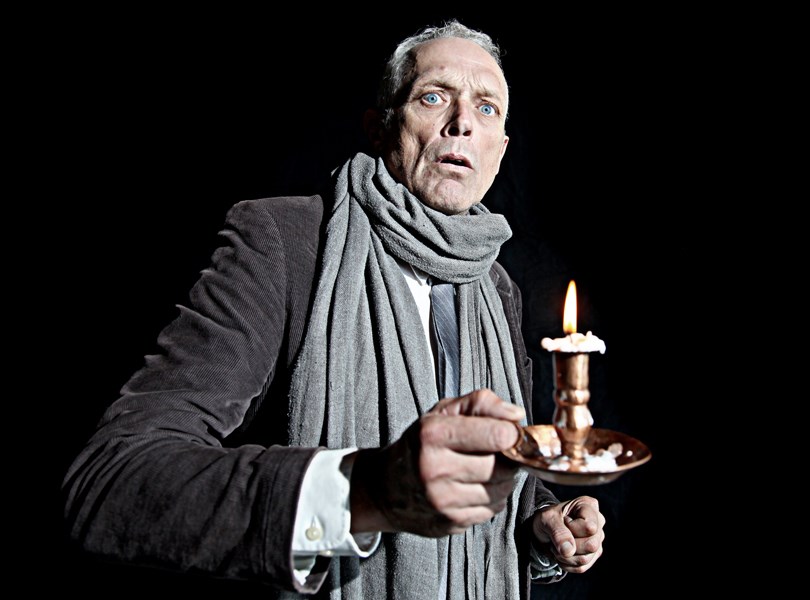The Woman in Black
Little Mountain Gallery (26th and Main)
Nov. 5-9 and Nov. 12-16
brownpapertickets.com
No tricks, all treats at the Halloween night opening of The Woman in Black. Ghoulishly costumed partyers and exploding firecrackers outside along Main Street added to the ghostly tale of Mr. Arthur Kipps (Allan Morgan).
The play, which opened in London’s West End in 1989, is still being performed at the Fortune Theatre and is the second longest-running non-musical play in the history of the West End after The Mousetrap. Based on a 1983 book by Susan Hill, The Woman in Black was adapted for stage by Stephen Mallatratt in 1987.
While it’s an entertainingly spooky tale of never-ending revenge, it’s the framing of the play that makes it more than just another creepy story of isolated, cobwebby mansions, restless ghosts, shadowy graveyards and dead children.
Old, gaunt Mr. Kipps has hired The Actor (Chris Cochrane) to help him with his weighty manuscript — a memoir of sorts — that he hopes to read to his family and friends. Weightier than the script, however, is his grief and his need to tell his story: “I can carry the burden no longer,” he cries. But Kipps is no “act-or” as he repeatedly admits and so The Actor decides to turn what would be a five-hour reading into a play where sounds effects and lighting will allow for cutting long descriptive passages. The Actor will play Kipps and Kipps will play everyone else.
This clever framing allows for a lot of initial humour as Kipps underacts then overacts recklessly, his voice booming out and his hands gesticulating wildly. Morgan hams this up shamelessly and it’s very funny. Eventually Kipps really gets the hang of it and the story unfolds but not without — now and again — reminders of just how far Kipps has come on his thespian journey. Or not; his turn as a little housemaid, feather duster in hand, is inadvertent farce.
We delight in Kipps’ childlike discovery of the magic of theatre — how the mere sound of ponies clipping along, for example, puts us there in the cart on the way across the tidal causeway through the swirling mist and fog to Eel Marsh House. He is transported, as are we, through theatre.
Cochrane is beamingly avuncular as The Actor. Full of jolly good humour, Cochrane’s Actor is naïve, unwilling to believe in the existence of pure evil, steadfast in his belief that no harm will befall him. Until it does. Cochrane is the steadying fulcrum around which the haunted Kipps turns.
Here in the tiny, rundown space that is Little Mountain Gallery is a worse-for-wear, red velvet curtain framing a tiny proscenium stage. Two actors, one standing lamp with a bare bulb, a few boxes, two trunks. A scrim. Add talent. Dedication to the craft. An audience with the willingness to suspend disbelief. That’s all it takes.
Kevin Bennett, directing for Yogurt Theatre, is creating a reputation for doing a lot with little. Consider his direction of King Lear for Honest Fishmongers Equity Co-op at Havana Theatre or Macbeth for Limbo Circus Theatre at Little Mountain Studio. There’s a lot to be said for intimate spaces, and Bennett really knows how to work them.
There’s a nice little twist at the end but if you think about it — and are inclined to believe in ghosts — there’s an additional, not-so-very-nice twist at curtain. If you think you saw a woman in black, a woman suffering from some terrible wasting disease, behind the scrim, keep a sharp eye out for your children born or yet-to-be-born. What happens at Little Mountain Gallery may not stay at Little Mountain Gallery.
For more reviews, go to joledingham.ca.


